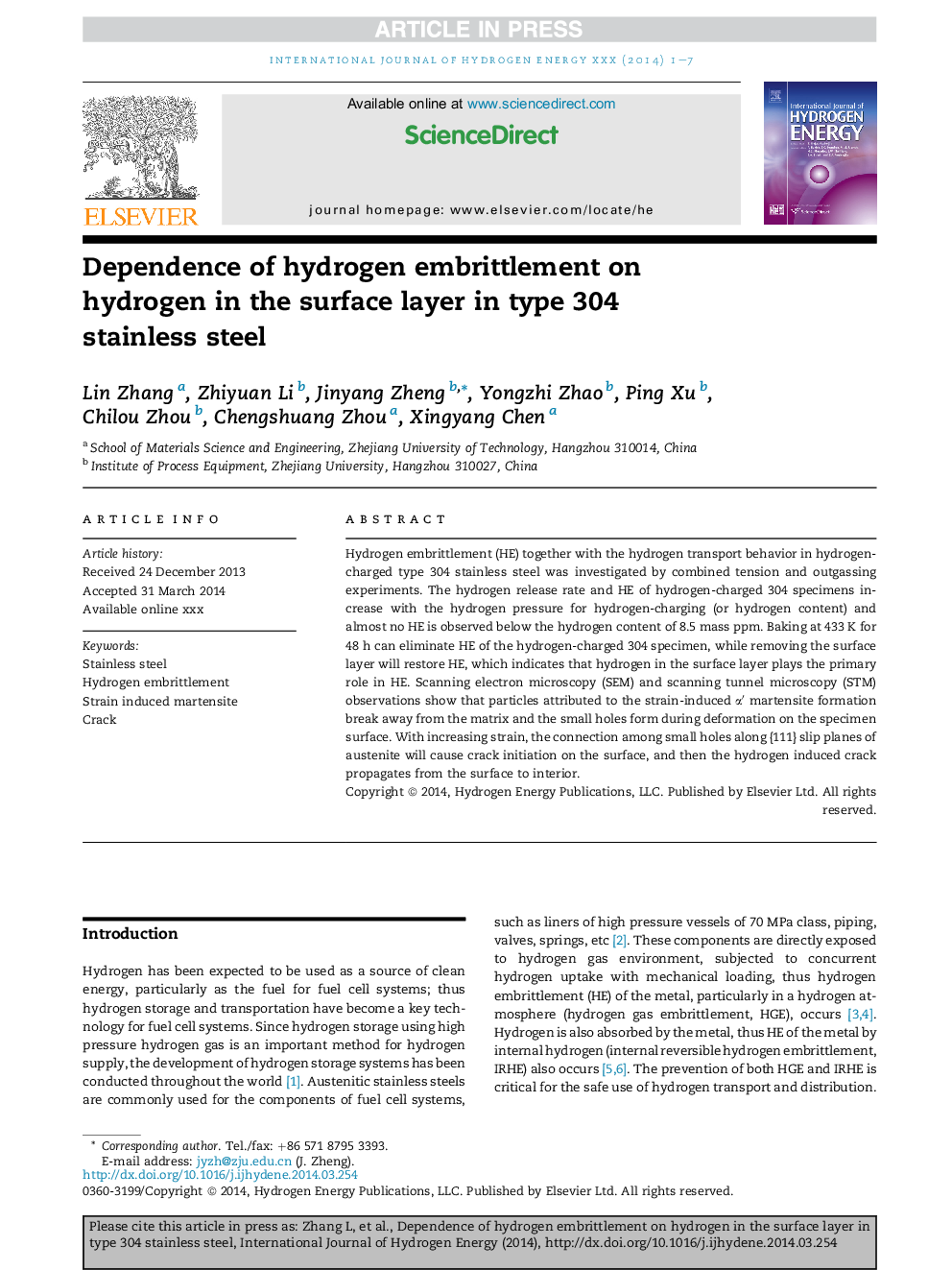| Article ID | Journal | Published Year | Pages | File Type |
|---|---|---|---|---|
| 7717987 | International Journal of Hydrogen Energy | 2014 | 7 Pages |
Abstract
Hydrogen embrittlement (HE) together with the hydrogen transport behavior in hydrogen-charged type 304 stainless steel was investigated by combined tension and outgassing experiments. The hydrogen release rate and HE of hydrogen-charged 304 specimens increase with the hydrogen pressure for hydrogen-charging (or hydrogen content) and almost no HE is observed below the hydrogen content of 8.5 mass ppm. Baking at 433 K for 48 h can eliminate HE of the hydrogen-charged 304 specimen, while removing the surface layer will restore HE, which indicates that hydrogen in the surface layer plays the primary role in HE. Scanning electron microscopy (SEM) and scanning tunnel microscopy (STM) observations show that particles attributed to the strain-induced αⲠmartensite formation break away from the matrix and the small holes form during deformation on the specimen surface. With increasing strain, the connection among small holes along {111} slip planes of austenite will cause crack initiation on the surface, and then the hydrogen induced crack propagates from the surface to interior.
Related Topics
Physical Sciences and Engineering
Chemistry
Electrochemistry
Authors
Lin Zhang, Zhiyuan Li, Jinyang Zheng, Yongzhi Zhao, Ping Xu, Chilou Zhou, Chengshuang Zhou, Xingyang Chen,
